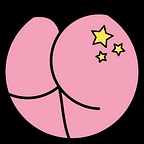Across the human history the figure of women has occupied a main role in different cultures and eras. From divine figures to sexual figures, the social position of women has changed over time and with each new look, a new canon of beauty has also emerged for them.
325 AD
The Bikini Mosaic (figure 1) found in a mansion in Sicily represents a scene of sports competition for women, bodies of different sizes and shapes are reflected in the composition. The early appearance of the bikini is what gives the mosaic its name.
Centuries of art would pass where the female figure would be limited to appearing in Catholic works, being mostly a representation of the Virgin and other religious figures.
1635–1640 AD
The Three Graces are part of the Greek mythology and would appear in 9 paintings by Rubens, the most prominent presence they had is on the one that is currently exhibited in the Prado Museum.
The graces are representations of feminine beauty, love and fertility. Rubens was inspired by his second wife to paint the face of one of the graces. Love surrounds these paintings in many ways, the roses, the fountain and the deer are symbols that are often used as metaphors for Cupid, Artemis or the goddess Venus.
Despite having inspiration in the divinities, the way in which the graces are naked showing off their body, their curves, entwined through their arms and surrounded by an aura of sensuality and love, separates them from the rest of the religious works of the past centuries and brings us closer to the vision of feminine beauty of the time.
1909–1910
Neo-Impressionism ends, giving rise to avant-garde paintings such as Picasso’s The Avignon Ladies, which, among others, introduced feminine beauty in the Cubism movement, but Henri Matisse would take charge of doing it in the Fauvism.
La Danse by Henri Matisse (figure 3) is a painting that returns to rock art, representing free women in nature, without concerns beyond dancing in community.
The concept of beauty is assumed to be intrinsic to the existence of free women.
1917–1918
Reclining Nude from the Back (Nu Couche de Dos, figure 4) belongs to the collection of reclining nudes. Modigliani painted these paintings wrapped in a sexual aura mixing together different traditions of beauty from different cultures. The masklike treatment of the faces derived from archaic Greek, Asian, ancient Egyptian, and African sources.
1952–1953
The Blue Nudes collection refer to a series of cut-outs by Henri Matisse, illustrating how provocative a simple design can be. Taking inspiration from African sculptures, the figures of women in this collection are related to each other, generating a very successful visual harmony. The color blue meant distance and volume to Matisse and the poses for all four works seem to imply that women are trapped in their sexual object status, with their arms and legs twisted and downcast eyes.
The female beauty will face several changes in this long period, from a natural and imperfect beauty to a more exotic and non european vision of beauty, but also will be full of sexualization and a seductive role of women.
And will continue this path in future works over time.
Pop Booty links:
- Linktree: linktr.ee/popstudios
- Twitter: https://twitter.com/PopBootyNFT
- Discord: discord.gg/5HqrbpJUF8
